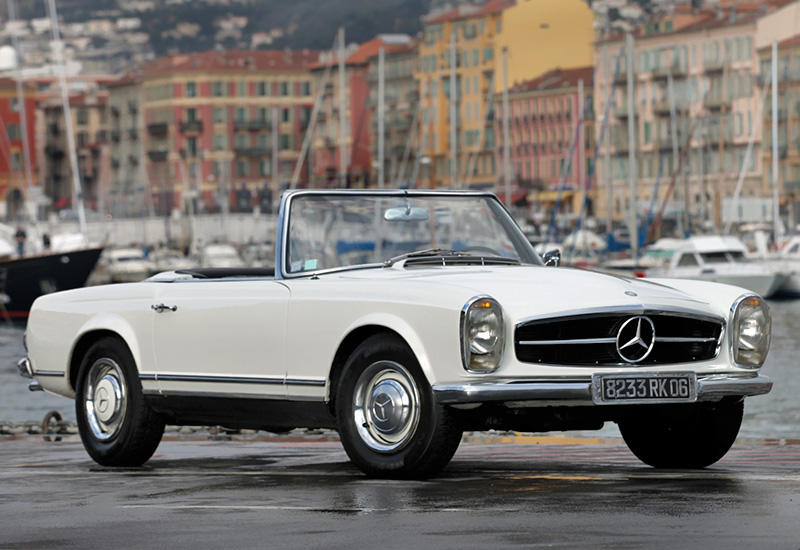pada tanggal
Car
car design
- Dapatkan link
- X
- Aplikasi Lainnya

Mercedes-Benz 230SL and its successors 250SL and 280SL (1963-1971)
As the first in Mercedes-Benz history, the car was shown to the press two weeks before it was officially announced at the Geneva Auto Show on March 14, 1963. In this way, it was guaranteed that their report would be issued on or before the official launch date of the car. This Benz was eagerly awaited, and no one knew if it would follow the powerful 300SL or the popular 190SL. It did not obey either of them. When Professor Fritz Nallinger, chief engineer and board member, announced a new Mercedes-Benz 230SL internally called the W 113, it caused some sort of shock. As Rudolf Uhlenhout’s talented engineer Eric Waxenberger once said, the car looked as if a tree had fallen on it. The roof was … well … unusual. But not only did the roof cause some turmoil, it was also the performance of the car. Everyone was expecting a successor to the legendary 300SL.
Of course, Daimler-Benz was sticking to its approach to the new SL role. It was neither 300SL nor 190SL. It was a high-performance touring sports car with excellent handling characteristics that could carry two passengers and luggage in a stylish, comfortable and above all safe way. It was Mercedes-Benz in itself. To prove the sporting side, Rudolf Uhlenhout was always able to run quickly around the race track, pushing the 230SL around the 1.5km round circuit near Montreux in front of the press. It was most impressive that British Grand Prix driver Mike Parkes couldn’t drive that fast. His car wasn’t SL, his car was a Ferrari 250 GT Berlinetta!
Many of the technical features of the car weren’t entirely new, but what made this Benz special was its combination and its improvements. The running gear was equipped with ball steering and a dual circuit braking system. Garling disc brakes were mounted on the front axle and vacuum assisted alfin drums were mounted on the rear. For the first time in Mercedes-Benz history, such cars were ordered with power steering and were the most shocking to most European journalists: automatic transmissions. Sports cars and automatic transmissions? Absolutely impossible! It wasn’t just the media that thought that way, it was the same as most of the European masses. Not surprisingly, such cars were rarely sold in Europe. Americans were already one step ahead. For them, the combination of a sports car and an automatic transmission makes a lot of sense. And this extra was certainly beneficial, as Daimler-Benz considered selling about 80% of its cars abroad. Mercedes-Benz was equipped as standard with a 4-speed manual with a gear ratio of 3.75: 1. It was similar to the one used on the 220SE, but with a shorter 1st gear ratio of 4.42: 1 instead of 3.64: 1. It should ensure faster acceleration, but it wasn’t widely accepted, so the new 250S / SE manual transmission was adopted in 1965.
In 1967, two years after the launch of the 250 sedan series, the 230SL was replaced by the 250SL. Its larger engine reduced the slightly boring performance at low revs. Unfortunately, it suffered from high-speed reliability issues. It’s not that sports car drivers were too amused to hear. This problem was quickly resolved, but the car was also notorious for its relatively high fuel consumption. Only a year later, it was replaced by a larger, choking 2.8-liter engine. It provided 170 horsepower at 5,750 rpm compared to the previous 150 horsepower at 5,500 rpm, which also had slightly more torque and an improved fuel economy.
The price of the 250SL Benz was 22,800.-DM ($ 5,700.-), which was about the same as the 230SL, but the 280SL was more expensive than the 1,500.-DM ($ 375.-). In the United States, the 280SL costs about $ 7,500. But the customers didn’t care, they loved the package and started running. The Mercedes-Benz 280SL has sold 23,885 units over the five years, more than half of which have been sold to North America. The 230SL sold 19,813 units during the same period.
Komentar
Posting Komentar